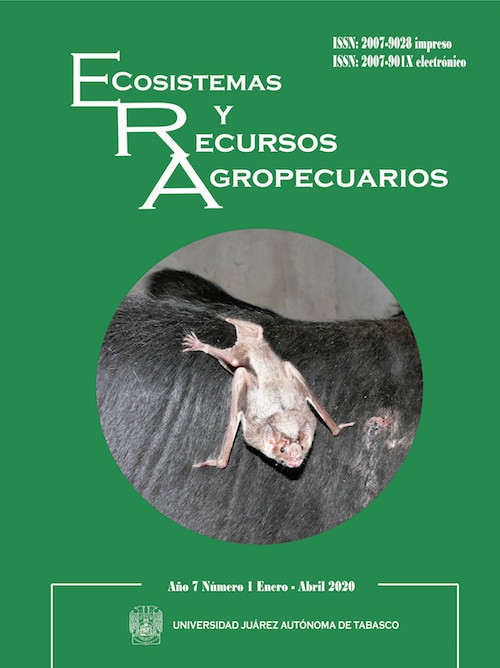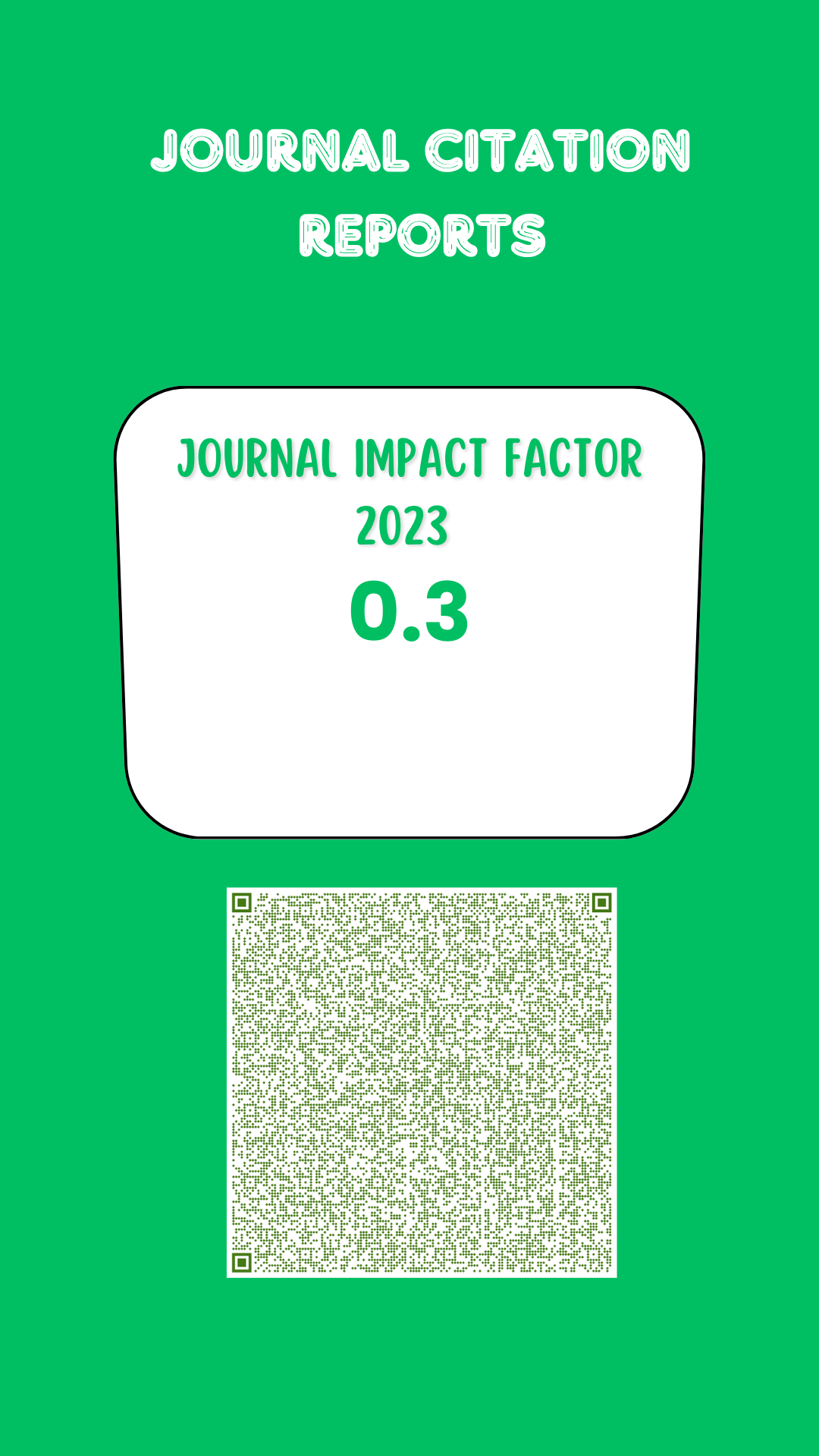Interacción espacial y temporal entre dos mesocarnívoros en un paisaje antropizado del centro de México
DOI:
https://doi.org/10.19136/era.a7n1.2089Palabras clave:
Gato montés, ocupación, patrones de actividad, perro, urbanizaciónResumen
Los perros son los carnívoros más abundantes y ampliamente distribuidos en el mundo, con un alto potencial de interactuar y ejercer un efecto negativo sobre la fauna nativa. Se investigó la existencia de segregación espacial y temporal entre perro y gato montés en 40 parches de hábitat del centro de México. Se utilizaron registros fotográficos de 220 estaciones de fototrampeo para analizar sus probabilidades de ocupación, detección y patrones de actividad. La ocupación y detección fueron similares en el área de estudio (perro: psi = 0.513 ± 0.302, p = 0.080 ± 0.062, gato montés: psi = 0.600 ± 0.473, p = 0.052 ± 0.098), aquellas unidades de muestreo con mayor probabilidad de ocupación de perro tuvieron menor probabilidad de ocupación de gato montés. La ocupación del perro estuvo asociada con la presencia humana y la del gato montés con mayor cobertura arbórea, lejos de caminos y poblados. El gato montés fue primordialmente nocturno, y el perro diurno. Sus patrones de actividad se sobrepusieron un 55%. La mayor sobreposición ocurrió en periodos nocturnos/crepusculares, dónde, se presentó el 38% de los registros de perro. Este periodo de actividad ocurre generalmente cuando disminuye la actividad humana, por lo que la falta de vigilancia en el área podría incrementar el riesgo de interacciones negativas, como competencia o depredación sobre la fauna nativa. Debido a la fuerte asociación del perro con las actividades humanas, es necesaria una concientización de sus efectos en el ecosistema, como mayor control sobre su presencia, movimientos y reproducción.
Descargas
Referencias
Akaike H (1973) Information theory and an extension of the maximum likelihood principle. En: Petrov BN, Csaki F(ed). Proceedings of the 2nd International Symposium on Information Theory. Akademiai Kiado. Budapest, Hungría. pp: 267-281.
Anaya-Zamora V, López-González CA, Pineda-López RF (2017) Factores asociados en el conflicto humanocarnívoro en un área natural protegida del centro de México. Ecosistemas y Recursos Agropecuarios 4:
-393.
Anderson EM, Lovallo MJ (2003) Bobcat and Lynx. En: Feldhamer GA,Thompson BC, Chapman JA (ed). Wild mammals of North America: biology, management, and conservation. 2th edition. Johns Hopkins University Press. Baltimore, USA. pp: 758-786.
Bergman DL, Breck SW, Bender SC (2009) Dogs gone wild: feral dog damage in the United States. Proceedings of the 13th Wildlife Damage Management Conference 13: 177-183.
Burnham KP, Anderson DR (2002) Model selection and multimodel inference: a practical information-theoretic approach. Springer Science & Business Media. New York, USA. 485p.
Butler JRA, Du-Toit JT (2002) Diet of free-ranging domestic dogs (Canis familiaris) in rural Zimbabwe: implications for wild scavengers on the periphery of wildlife reserves. Animal Conservation 5: 29-37.
Butler JRA, Du-Toit JT, Bingham J (2004) Free-ranging dogs (Canis familiaris) as predators and prey in rural Zimbawe: threats of competition and disease to large wild carnivores. Biological Conservation 115: 369-378.
Challenger A (1998) Utilización y conservación de los ecosistemas terrestres de México: pasado, presente y futuro. Comisión Nacional para el Uso y Conocimiento de la Biodiversidad, Instituto de Biología de la UNAM y Agrupación Sierra Madre S.C. Ciudad de México, México. 847p.
Challenger A (2014) Paisajes naturales y humanos de México. En: Valdez R, Ortega-S JA (ed). Ecología y manejo de fauna silvestre en México. Colegio de Postgraduados. Estado de México, México. pp: 21-52.
Chapman JA, Hockman JG, Ojeda MM (1980) Sylvilagus floridanus. Mammalian species 136: 1-8.
Courchamp F, Chapuis JL, Pascal M (2003) Mammal invaders on islands: Impact, control and control impact. Biological reviews of the Cambridge Philosophical Society 78: 347-383.
Cushman SA, McRae BH, McGarigal K (2016) Basics of landscape ecology: an introduction to landscape and population processes for landscape genetics. En: Balkenhol N, Cushman SA, Storfer AT, Waits LP (ed). Landscape genetics: concepts, methods, applications. John Willey & Sons. West Sussex, UK. pp: 11-34.
Czech B, Krausman PR, Devers PK (2000) Economic associations among causes of species endangerment in the United States. BioScience 50: 593-601.
Daniels TJ, Bekoff M (1989) Population and social biology of free-ranging dogs, Canis familiaris. Journal of Mammalogy 70: 754-762.
Doherty TS, Dickman CR, Nimmo DG, Ritchie EG (2015) Multiple threats, or multiplying the threats? Interactions between invasive predators and other ecological disturbances. Biological. Conservation 190: 60-68.
Doherty TS, Glen AS, Nimmo DG, Ritchie EG, Dickman CR (2016) Invasive predators and global biodiversity loss. Proceedings of the National Academy of Sciences of the United States of America 113: 11261-11265.
Doherty TS, Dickman C.R, Glen AS, Newsome TM, Nimmo DG, Ritchie EG, Vanak AT, Wirsing J (2017) The global impacts of domestic dogs on threatened vertebrates. Biological Conservation 210: 56-59.
Donovan TM, Freeman M, Abouelezz H, Royar K, Howard A, Mickey R (2011) Quantifying home range habitat requirements for bobcats (Lynx rufus) in Vermont, USA. Biological Conservation 144: 2799-2809.
dos Santos CL, LePendu Y, Giné GA, Dickman CR, Newsome TM, Cassano CR (2018) Human behaviors determine the direct and indirect impacts of free-ranging dogs on wildlife. Journal of Mammalogy 99: 1261-1269.
du Preez BD, Loveridge AJ, Macdonald DW (2014) To bait or not to bait: a comparison of camera-trapping methods for estimating leopard Panthera pardus density. Biological Conservation 176: 153-161.
Elbroch LM, Kusler A (2018) Are pumas subordinate carnivores, and does it matter? PeerJ 6: e4293.
Espinosa-Flores ME, Lara-Díaz NE, López-González CA (2018) Respuesta a un paisaje antropizado por el género Canis en el centro de México. En: Ramírez-Bautista A, Pineda-López R (ed). Ecología y Conservación de Fauna en Ambientes Antropizados. REFAMA-CONACyT-UAQ. Querétaro. México. pp: 5-15.
Espinosa-Flores ME, López-González CA (2015) Range extension for the White-nosed coati (Nasua narica) in Southeastern, Guanajuato, México. Western North American Naturalist 75: 244-247.
Espinosa-Flores ME, López-González CA (2017) Landscape attributes determine bobcat (Lynx rufus escuinapae) presence in Central México. Mammalia 81: 101-105.
ESRI (2013) ArcGIS Desktop: Release 10.1. Environmental Systems Research Institute. Redlands, California.
Farris ZJ, Gerber BD, Karpanty S, Murphy A, Andrianjakarivelo V, Ratelolahy F, Kelly MJ (2015) When carnivores roam: temporal patterns and overlap among Madagascar’s native and exotic carnivores. Journal of Zoology 296: 45-57.
Farris ZJ, Karpanty SM, Ratelolahy F, Kelly MJ (2014) Predator-primate distribution, activity, and co-occurrence in relation to habitat and human activity across fragmented and contiguous forests in Northeastern Madagascar. International Journal of Primatology 35: 859-880.
Farris ZJ, Kelly MJ, Karpanty S, Murphy A, Ratelolahy F, Andrianjakarivelo V, Holmes C (2017) The times they are a changin’: Multi-year surveys reveal exotics replace native carnivores at a Madagascar rainforest site. Biological Conservation 206: 320-328.
Fiske I, Chandler R, Miller D, Royle A, Kery M, Hostetler J, Hutchinson R, Smith A, Kellner K (2015) Package ‘unmarked’: models for data from unmarked animals. https://cran.r-project.org/web/packages/unmarked/. Fecha de consulta: 7 de junio de 2018.
Foster VC, Sarmento P, Solman R, Torres N, Jácomo AT, Negroes N, Fonseca C, Silveira L (2013) Jaguar and puma activity patterns and predator-prey interactions in four Brazilian biomes. Biotropica 45: 373-379.
Gaynor KM, Hojnowski CE, Carter NH, Brashares JS (2018) The influence of human disturbance on wildlife nocturnality. Science 360: 1232-1235.
George SL, Crooks KR (2006) Recreation and large mammal activity in an urban nature reserve. Biological Conservation 33: 107-117.
Gomes-Rocha D, Ramalho EE, Magnusson WE (2016) Baiting for carnivores might negatively affect capture rates of prey species in camera-trap studies. Journal of Zoology 300: 205-2012.
Hammer Ø, Harper DAT, Ryan PD (2001) PAST: Paleontological Statistics Software Package for Education and Data Analysis. Paleontologia Electronica 4(1) Art. 9.
Hansen K (2007) Bobcat, master of survival. Oxford University Press. New York, USA. 212p.
Harmsen BJ, Foster RJ, Silver SC, Ostro LET, Doncaster CP (2009) Spatial and temporal interactions of sympatric jaguars (Panthera onca) and pumas (Puma concolor) in a Neotropical forest. Journal of Mammalogy 90:612-620.
Home C, Bhatnagar YV, Vanak AT (2018) Canine Conundrum: domestic dogs as an invasive species and their impacts on wildlife in India. Animal Conservation 21: 275-282.
Hughes J, Macdonald DW (2013) A review of the interactions between free-roaming domestic dogs and wildlife. Biological Conservation 157: 341-352.
INEGI (1970) IX Censo general de población. Instituto Nacional de Estadística y Geografía. http://www.beta.inegi.org.mx/proyectos/ccpv/1970/. Fecha de consulta: 8 de junio de 2018.
INEGI (2010a) Censo de población y vivienda 2010. Instituto Nacional de Estadística y Geografía. http://www.beta.inegi.org.mx/proyectos/ccpv/2010/default.html. Fecha de consulta: 8 de junio de 2018.
INEGI (2010b) Localidades de la República mexicana. 2010. Instituto Nacional de Estadística y Geografía. http://www.conabio.gob.mx/informacion/gis/. Fecha de consulta: 8 de junio de 2018.
INEGI (2017a) Carta de uso de suelo y vegetación, Serie VI. Instituto Nacional de Estadística y Geografía. http://www.inegi.org.mx/geo/contenidos/recnat/usosuelo/. Fecha de consulta: 8 de junio de 2018.
INEGI (2017b) Conjunto de datos vectoriales de carreteras y vialidades urbanas edición 1.0. Instituto Nacional de Estadística y Geografía. http://www.inegi.org.mx/geo/contenidos/topografia/vectoriales_carreteras.aspx. Fecha de consulta: 8 de junio de 2018.
Kamler JF, Ballard W, Gipson PS (2003a) Occurrence of feral dogs (Canis lupus familiaris) in northwest Texas: an observation. Texas Journal of Agriculture and Natural Resources 16: 75-77.
Kamler JF, Keeler K, Wiens G, Richardson C, Gipson PS (2003b) Feral dogs, Canis familiaris, kill Coyote, Canis latrans. Canadian Field Naturalist 117: 123-124.
Kelly M, Morin D, López-González CA (2016) Lynx rufus. The IUCN Red List of Threatened Species http://www.iucnredlist.org/details/12521/0. Fecha de consulta: 10 de junio de 2018.
Kerley LL, Goodrich JM, Miquelle DG, Smirnov EN, Quigley HB, Hornocker MG (2002) Effects of roads and human disturbance on Amur tigers. Conservation Biology 16: 97-108.
Knick ST (1990) Ecology of bobcats relative to exploitation and a prey decline in southeastern Idaho. Wildlife Monographs 108: 1-42.
Kolowski JM, Woolf A (2002) Microhabitat use by bobcats in southern Illinois. Journal Wildlife Management 66: 822-832.
Lara-Díaz NE, Coronel-Arellano H, López-González CA, Sánchez-Rojas G, Martínez-Gómez JE (2018) Activity and resource selection of a threatened carnivore: the case of black bears in northwestern Mexico. Ecosphere 9: e01923. Doi: 10.1002/ecs2.1923.
Lembeck M (1986) Long term behavior and population dynamics of an unharvested bobcat population in San Diego County. En: Miller SD, Everett DD (ed). Cats of the world: biology, conservation, and management. National Wildlife Federation. Washington D.C., USA. pp: 305-310
Lenth BE, Knight RL, Brennan ME (2008) The effects of dogs on wildlife communities. Natural Areas Journal 28: 218-227.
Lessa I, Guimarães TCS, de Godoy Bergallo H, Cunha A, Vieira EM (2016) Domestic dogs in protected areas: a threat to Brazilian mammals? Natureza & Conservação 14: 46-56.
López-González CA, Ávila-Aguilar D, Cruz-Torres MF (2015) Abundancia del gato montés (Lynx rufus escuinapae J.A. Allen, 1903) en el Parque Nacional El Cimatario, Querétaro, México. Acta Zoológica Mexicana 31: 138-140.
MacKenzie I, Nichols JD, Lachman GB, Droege S, Royle JA, Langtimm CA (2002) Estimating site occupancy rates when detection probabilities are less than one. Ecology 83: 2248-2255.
MacKenzie Dl, Nichols JD, Royle JA, Pollock KH, Bailey LA, Hines JE (2006) Occupancy estimation and modeling. Academic Press. Burlington, USA. 344p.
Manor R, Saltz D (2004) The impact of free-roaming dogs on gazelle kid/female ratio in a fragmented area. Biological Conservation 119: 231-236.
McKinney ML (2008) Effects of urbanization on species richness: a review of plants and animals. Urban Ecosystems 11: 161-176.
Meredith M, Ridout M (2014) Package ‘overlap’: Estimates of coefficient of overlapping for animal activity patterns. https://cran.r-project.org/web/packages/overlap/index.html. Fecha de consulta: 7 de junio de 2018.
Morin DJ, Lesmeister DB, Nielsen CK, Schauber EM (2018) The truth about cats and dogs: Landscape composition and human occupation mediate the distribution and potential impact of non-native carnivores. Global Ecology and Conservation 15: e00413. Doi: 10.1016/j.gecco.2018.e00413.
Morrison JC, Sechrest W, Dinerstein E, Wilcove DS, Lamoreux JF (2007) Persistence of large mammal faunas as indicators of global human impacts. Journal of Mammalogy 88: 1363-1380.
Ordeñana MA, Crooks KR, Boydston EE, Fisher RN, Lyren LM, Siudyla S, et al. (2010) The effects of urbanization on carnivore species distribution and richness. Journal of Mammalogy 91: 1322-1331.
Palomares F, Caro TM (1999) Interspecific killing among mammalian carnivores. The American Naturalist 153: 492-508.
Perpiñán LO (2012) solaR: solar radiation and photovoltaic systems with R. Journal of Statistical Software 50: 1-32.
Putman RJ, Wratten SD (1984) Principles of ecology. University of California Press. California, USA. 388p.
Ritchie EG, Dickman CR, Letnic M, Vanak AT (2013) Dogs as predators and trophic regulators. En: Gompper ME (ed). Free ranging dogs and wildlife conservation. Oxford University Press. New York, USA. pp: 55-68.
Reed GC, Litvaitis JA, Callahan C, Carroll RP, Litvaitis MK, Broman DJA (2017) Modeling landscape connectivity for bobcats using expert-opinion and empirically derived models: how well do they work? Animal Conservation 20: 308-320.
Rockhill AP, DePerno CS, Powell RA (2013) The effect of illumination and time of day on movements of bobcats (Lynx rufus). PLoS One 8: e69213. Doi: 10.1371/journal.pone.0069213.
Rzedowski J, Calderón de Rzedowski G (1987) El bosque tropical caducifolio de la región mexicana del Bajío. Trace 12: 12-21.
Rzedowski J, Calderón de Rzedowski G (1991) Presentación y guía para los autores y normas editoriales. Flora del Bajío y de Regiones Adyacentes I: 1-14.
Sepúlveda M, Pelican K, Cross P, Eguren A, Singer R (2015) Fine-scale movements of rural free-ranging dogs in conservation areas in the temperate rainforest of the coastal range of southern Chile. Mammalian Biology 80: 290-297.
Seto KC, Güneralp B, Hutyra LR (2012) Global forecasts of urban expansion to 2030 and direct impacts on biodiversity and carbon pools. Proceedings of the National Academy of Sciences 109: 16083-16088.
Sexton JO, Song XP, Feng M, Noojipady P, Anand A, Huang C, et al. (2013) Global, 30-m resolution continuous fields of tree cover: Landsat-based rescaling of MODIS Vegetation Continuous Fields with lidar-based estimates of error. International Journal of Digital Earth 6: 427-448.
Shannon G, Lewis JS, Gerber BD (2014) Recommended survey designs for occupancy modelling using motionactivated cameras: insights from empirical wildlife data. PeerJ 2: e532. Doi: 10.7717/peerj.532.
Sheriff MJ, Krebs CJ, Boonstra R (2009) The sensitive hare: sublethal effects of predator stress on reproduction in snowshoe hares. Journal of Animal Ecology 78: 1249-1258.
Silva-Rodríguez EA, Ortega-Solís GR, Jiménez JE (2010) Conservation and ecological implications of the use of space by chilla foxes and free-ranging dogs in a human-dominated landscape in southern Chile. Austral Ecology 35: 765-777.
Tigas LA, Van Vuren DH, Sauvajot RM (2002) Behavioral responses of bobcats and coyotes to habitat fragmentation and corridors in an urban environment. Biological Conservation 108: 299-306.
Vanak AT, Gompper ME (2009) Dogs Canis familiaris as carnivores: their role and function in intraguild competition. Mammal Review 39: 265-283.
Vanak AT, Gompper ME (2010) Interference competition at the landscape level: the effect of free-ranging dogs on a native mesocarnivore. Journal of Applied Ecology 47: 1225-1232.
Vidal-Zepeda R (1990a) Precipitación media anual, escala 1:4000000. En: Precipitación. Tomo II, Sección IV, 4.6. Atlas Nacional de México (1990-1992). Instituto de Geografía, UNAM. México.
Vidal-Zepeda R (1990b) Temperatura media, escala 1:4000000. En: Temperatura media. Tomo II, Sección IV, 4.4. Atlas Nacional de México (1990-1992). Instituto de Geografía, UNAM. México.
Villaseñor JL, Ortiz E (2012) La familia Asteraceae en la flora del Bajío y de regiones adyacentes. Acta Botánica Mexicana 100: 259-291.
Wandeler AI, Matter HC, Budde A, Kappeler A (1993) The ecology of dogs and canine rabies: a selective review. Revue Scientifique et Technique Office International des Epizooties 12: 51-71.
Wang Y, Allen ML, Wilmers CC (2015) Mesopredator spatial and temporal responses to large predators and human development in the Santa Cruz Mountains of California. Biological Conservation 190: 23-33.
Weston MA, Stankowich T (2014) Dogs as agents of disturbance. En: Gompper ME (ed). Free-ranging dogs and wildlife conservation. Oxford University Press. Oxford, UK. pp: 94-116.
Wierzbowska IA, H˛edrzak M, Popczyk B, Okarma H, Crooks KR (2016) Predation of wildlife by free-ranging domestic dogs in Polish hunting grounds and potential competition with the grey wolf. Biological Conservation 201: 1-9.
Young JK, Bergman DL, Ono M (2018) Bad dog: feral and free-roaming dogs as agents of conflict. Animal Conservation 21: 285-286.
Descargas
Publicado
Número
Sección
Licencia
1. Política propuesta para revistas de acceso abierto
Los autores/as que publiquen en esta revista aceptan las siguientes condiciones:
1. Los autores/as conservan los derechos de autor y ceden a la revista el derecho de la primera publicación, con el trabajo registrado con la licencia internacional Creative Commons Reconocimiento-No comercial-Compartir igual 4.0 .de atribución de Creative Commons, que permite a terceros utilizar lo publicado siempre que mencionen la autoría del trabajo y a la primera publicación en esta revista.
2. Los autores/as pueden realizar otros acuerdos contractuales independientes y adicionales para la distribución no exclusiva de la versión del artículo publicado en esta revista (p. ej., incluirlo en un repositorio institucional o publicarlo en un libro) siempre que indiquen claramente que el trabajo se publicó por primera vez en esta revista.
3. Se permite y recomienda a los autores/as a publicar su trabajo en Internet (por ejemplo en páginas institucionales o personales) antes y durante el proceso de revisión y publicación, ya que puede conducir a intercambios productivos y a una mayor y más rápida difusión del trabajo publicado (vea The Effect of Open Access).

Este trabajo está sujeto a una licencia internacional Creative Commons Reconocimiento-No comercial-Compartir igual 4.0 .



